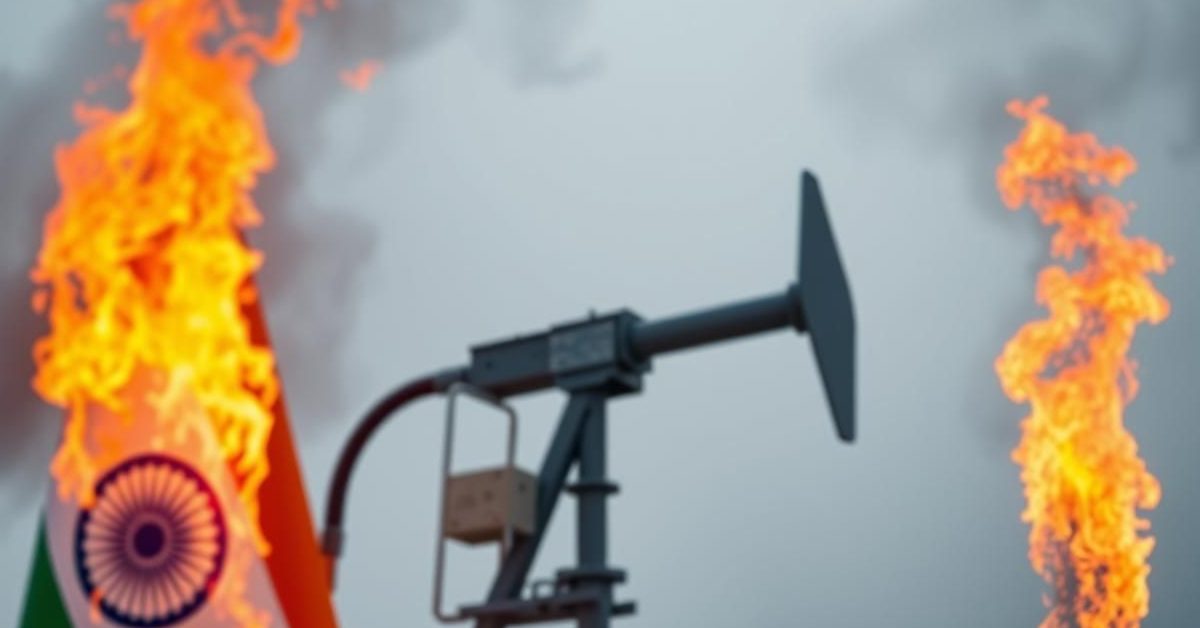India’s Petroleum Minister Hardeep Singh Puri has affirmed that the country is not concerned about potential disruptions to Russian oil supplies, citing ample global availability and India’s diversified energy sources.
Navigating Geopolitical Pressures on Oil
Minister Hardeep Singh Puri recently stated that India feels no pressure regarding its oil supply, even amidst warnings of secondary sanctions for countries trading with Russia. His comments follow remarks from NATO Secretary General Mark Rutte, who suggested nations like India, China, and Brazil could face significant penalties for ongoing business with Russia.
Adding to the complex geopolitical landscape, past threats from former US President Donald Trump about “biting” tariffs on buyers of Russian exports have created uncertainty. However, India remains steadfast, emphasizing its energy security.
India’s Diversified Sourcing Strategy
Puri highlighted that India has significantly expanded its crude oil sourcing, now importing from approximately 40 countries, up from 27 just a few years ago. This strategic diversification is key to India’s confidence in maintaining a stable oil supply.
Despite Russia currently accounting for about 40% of India’s total oil imports, Puri stressed that this large share does not equate to dependence. He noted that other suppliers could quickly step in if Russian volumes were to be disrupted.
The Rise of Russian Crude in India
Before the conflict in Ukraine, Russia contributed less than 2% to India’s oil imports. However, as Western nations began to shun Russian crude, Moscow offered significant discounts, which Indian refiners were quick to seize. This shift allowed Russia to rapidly become India’s top oil supplier, displacing traditional heavyweights like Iraq and Saudi Arabia.
India’s stance has consistently been to purchase oil from any source offering the best price, provided it is not under sanctions. While Russian oil itself isn’t directly sanctioned, a $60 per barrel price cap exists, limiting Western shipping and insurance involvement if the price exceeds this threshold.
Looking Ahead: Tariff Threats and Market Dynamics
The potential for the US to implement tariffs against countries importing Russian oil remains a key point of discussion. India is actively engaging with US lawmakers and the administration to voice concerns over its energy security, as India depends on imports for around 88% of its crude oil needs.
The Indian oil sector hopes that such tariffs won’t materialize, as a well-supplied global oil market benefits everyone. Should tariffs be imposed, India might need to reduce Russian imports and increase reliance on traditional West Asian suppliers, potentially leading to higher import costs.
Currently, Indian refiners are adopting a “wait-and-watch” approach. There’s even a possibility that Russian crude imports could temporarily increase as refiners aim to stock up on discounted oil before any potential tariff action takes effect. India also plans to continue diversifying by exploring additional crude volumes from Africa, Latin America, and the US, aiming to optimize refinery economics and enhance overall energy security.
- India is confident in its oil supply due to a diversified global sourcing strategy.
- Despite geopolitical pressures, India’s priority is securing oil at the best available price.
- Russia became India’s top oil supplier by offering discounted crude after the Ukraine conflict.
- India continues to expand its supplier base to ensure long-term energy security.
India’s strategic approach to its energy imports reflects a commitment to national interest, balancing global market dynamics with its domestic energy security needs.














